This Is Why Global Warming Is Responsible For Freezing Temperatures Across The U.S.

Weather isn’t climate. The President isn’t a scientist. And physics is still real.
The country is freezing in an unprecedented fashion, and global warming is to blame. Sound crazy? The cold snap that North America is experiencing east of the rocky mountains, with temperatures at Arctic-like levels, is real, but it’s only part of the story. Simultaneously, there are record warm temperatures happening in other parts of the world, from Australia to the actual Arctic.
While a small but vocal minority of people might use the faulty logic of, “it’s cold where I am, therefore global warming isn’t real,” even schoolchildren know that weather isn’t climate. But these extreme cold snaps have gotten more severe in recent years, due to a combination of global warming and a phenomenon you’ve likely heard of: the polar vortex. Here’s the science of how it works, and why global warming is paradoxically playing a major role in today’s record-low temperatures.
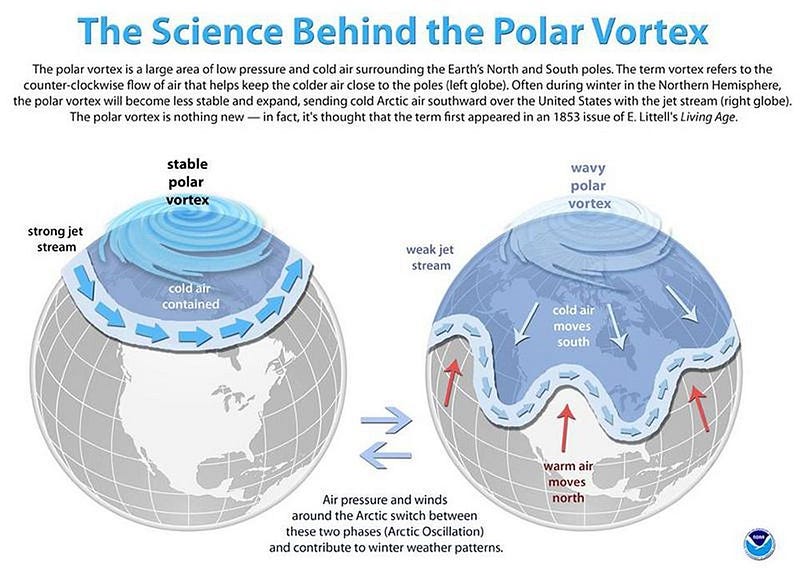
When you think about the Earth, including its weather, climate, and temperature, what picture do you get in your head?
The best way to picture Earth is as a sphere rotating on its axis, but with two additional effects: the atmosphere and the oceans. As the Earth rotates on its axis, we experience warming during the day (in direct sunlight) and cooling at night (in the dark), as the Earth radiates its stored heat away into the depths of space. When our hemisphere is tilted towards the Sun, we experience summer months; when our hemisphere is tilted away from the Sun, we experience winter months.
The ocean stores tremendous amounts of heat, with ocean currents transporting that heat from one location to another. But in terms of these particular weather events we’re experiencing right now, the atmosphere is the biggest factor.
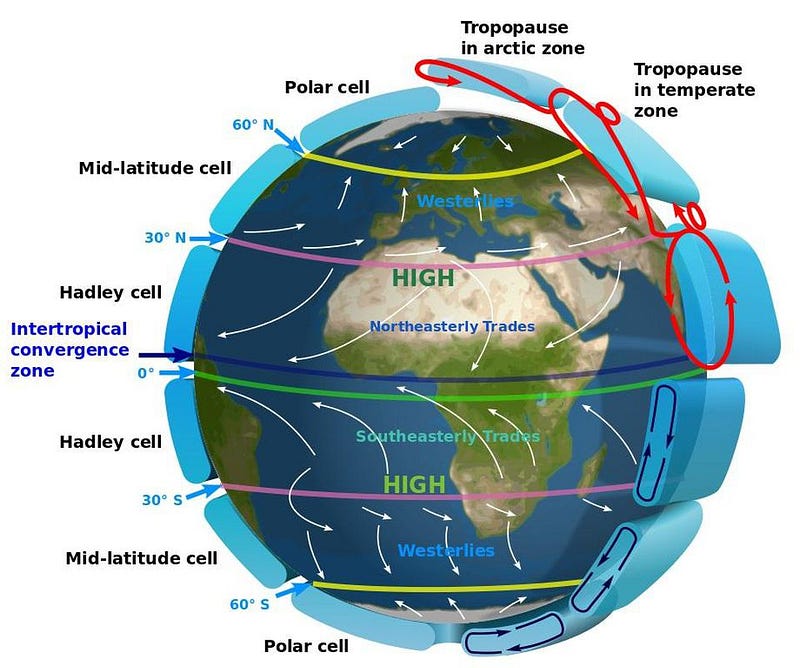
On any planet that rotates, you’ll have an effect called the prevailing winds. As the atmosphere circulates around the world, planet Earth typically experiences three different types of winds, normally confined to three different latitude zones:
- 0° to 30°: where we get the trade winds, which blow from east to west and converge at the equator.
- 30° to 60°: which give us the westerlies, which blow from west to east, and rise up towards the Arctic (or down towards the Antarctic) circle.
- 60° to 90°: the polar cells, which are normally confined to the highest-latitude regions on Earth.
Although the latitude bands differ, this phenomenon is common to most rapidly rotating planets with atmospheres, including Venus, Mars, Jupiter and Saturn. Earth, though, is a little bit special.
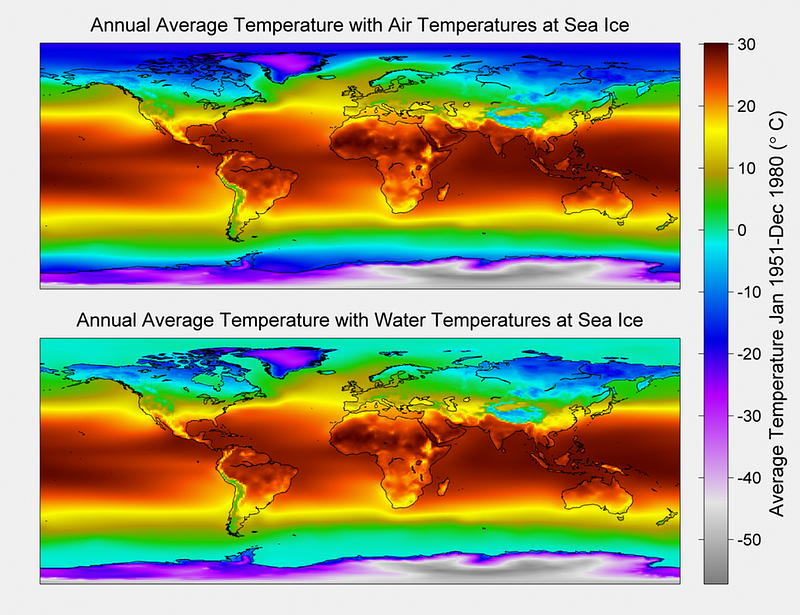
Because of the thinness of Earth’s atmosphere, our substantial axial tilt, the behavior of cloud cover and reflectivity at the poles, and a number of other factors, our planet has an extremely large temperature difference between the equator and the poles. This temperature difference is smallest in the summer, when the polar areas experience nearly 24 hours of continuous sunlight, and largest in the winter, where it’s almost always night.
As a result of these severe temperature differences, there is a persistent, large-scale, low-pressure zone that rotates in a cyclone-like fashion at each pole: from west to east. (Counterclockwise at the north pole, clockwise at the south pole.) These two zones are known as polar vortices, and they each start a few miles up in the atmosphere and extend well into the stratosphere.
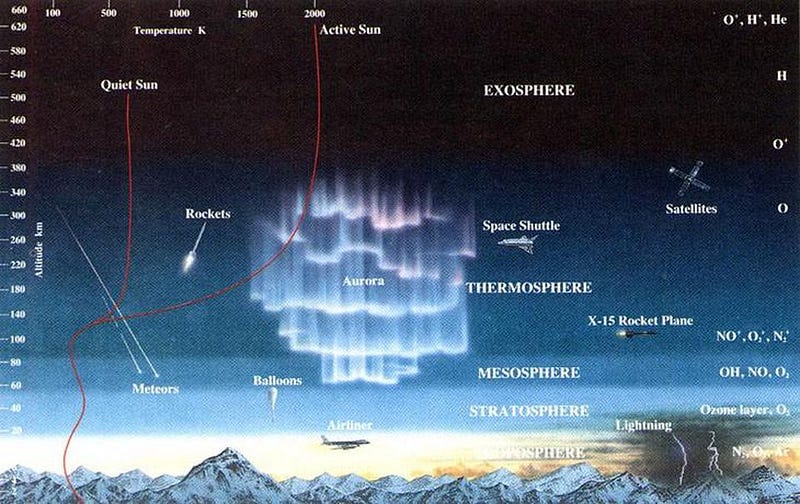
Beneath them, you’ll typically find a large mass of cold, dense air surrounding each of the poles. Normally, these vortices are stable enough, as temperature and pressure differences are severe enough, to keep them in place throughout the year.
When the vortices are at their strongest, you get a single cell, and the air is extremely well-confined. When the vortices weaken, they can break up into two or more cells, and begin to migrate away from the poles. When they’re extremely weak, they can fragment, and some of that low pressure, low temperature air can begin to interact with the higher pressure, higher temperature air from outside the polar regions.
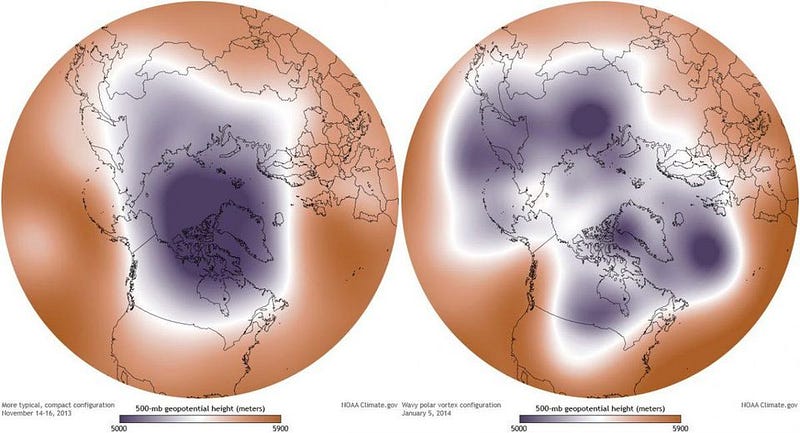
Although the term has been around since the 1850s, few people heard of the polar vortex until earlier this decade, when it became so weak that it migrated over the North American and Eurasian continents, causing some of the coldest winter weather we’ve seen in recent history.
When the vortex at the north pole becomes extremely weak, the high pressure zones found in the middle latitudes of Earth (where the westerlies are) can push towards the poles, displacing the cold air. This causes the polar vortex to move farther south. In addition, the jet stream buckles, and deviates towards more populous, southern latitudes. As the cold, dry air from the poles comes in contact with the warm, moist air of the mid-latitudes, you get a dramatic weather change that we conventionally refer to as a cold snap.
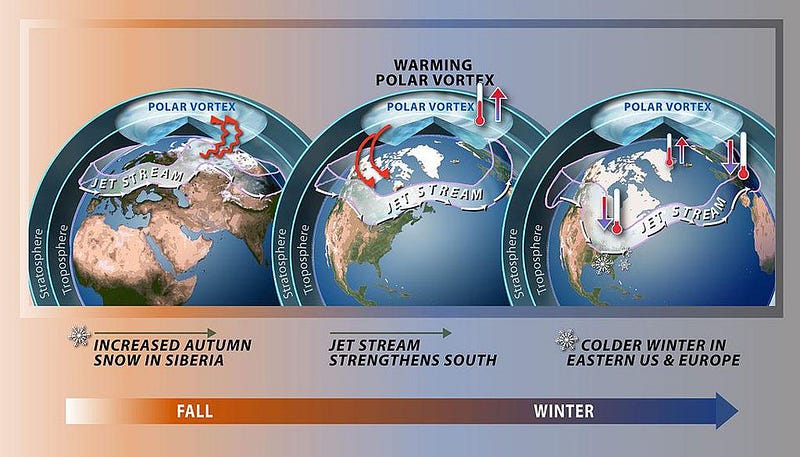
The weather we’re experiencing across much of the northern hemisphere is due to exactly this phenomenon, occurring right now.
But how is global warming to blame?
The answer is simple: because the phenomenon that causes the polar vortex to break down is known as sudden stratospheric warming, where the upper layers of the atmosphere increase in temperature by approximately 30–50 °C (54–90 °F) over the span of only a few days. The fact that there are land masses located where they are in the northern hemisphere means that as those land temperatures increase, they transport their heat to even more northern latitudes.
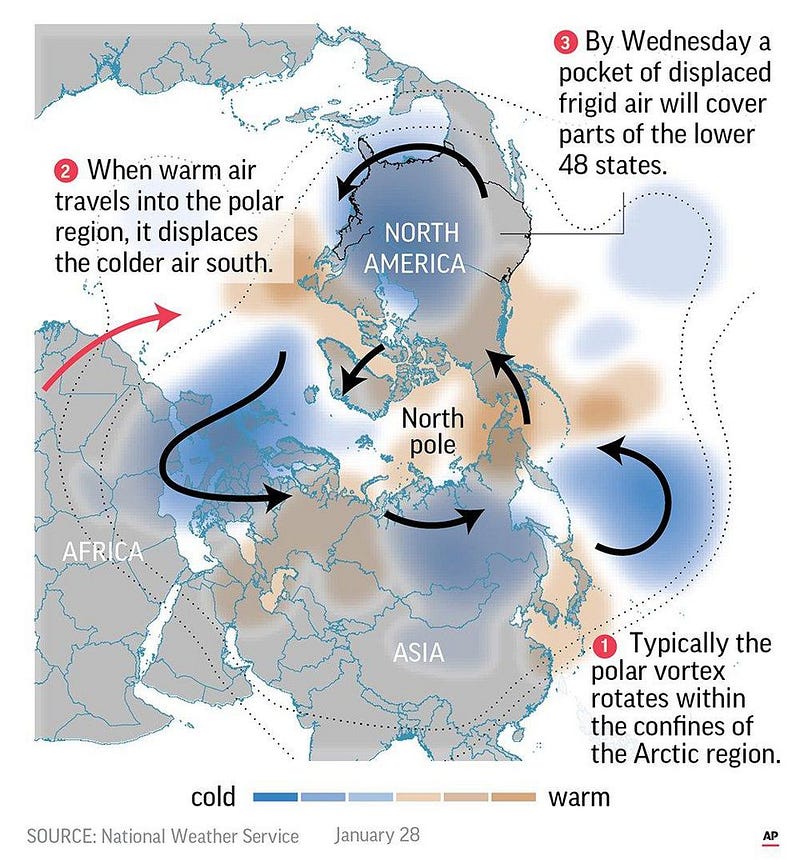
The exact details of how this works are complex, but the explanation is simple: warmer land temperatures, particularly in northern North America and northern Eurasia, allow more heat to be transported into the Arctic stratosphere. A warmer Earth makes sudden stratospheric warming events more likely and more frequent. And those events destabilize the polar vortex, bring cold air down into the mid-latitudes, and cause the extreme weather we’re experiencing right now.
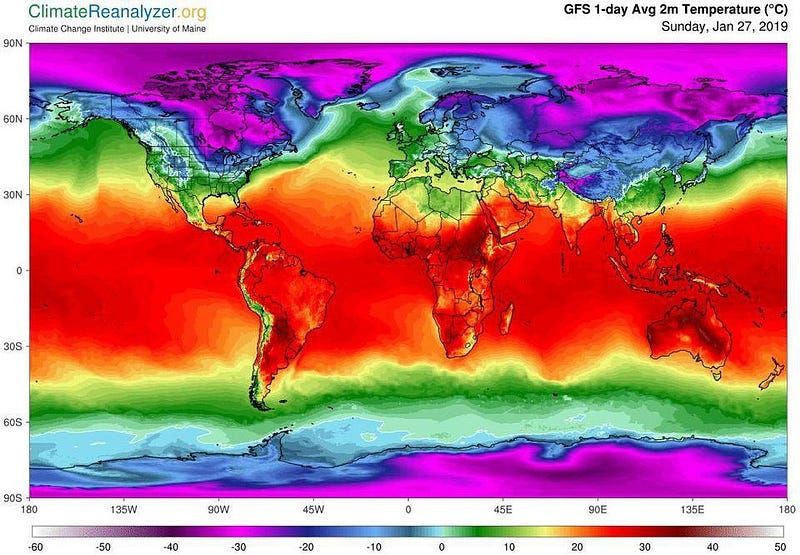
As the Earth continues to warm, there will be reduced snow cover and less sea ice in these critical regions, which alters the pressure and temperature gradients of the regions at the boundary of the polar vortex. In extreme cases, the polar vortex weakens or collapses as a result. The migration of the jet stream is one of the first signs, and it has become an all-too-frequent phenomenon in recent years.
The enormous cold snap we experienced in 2014 wasn’t a one-off event. Although for many, that storm was so memorable it feels like it was only yesterday, we can absolutely expect these types of extreme weather events to become commonplace in the coming years. The climate is changing, and it’s affecting our weather in a variety of ways all across the globe.
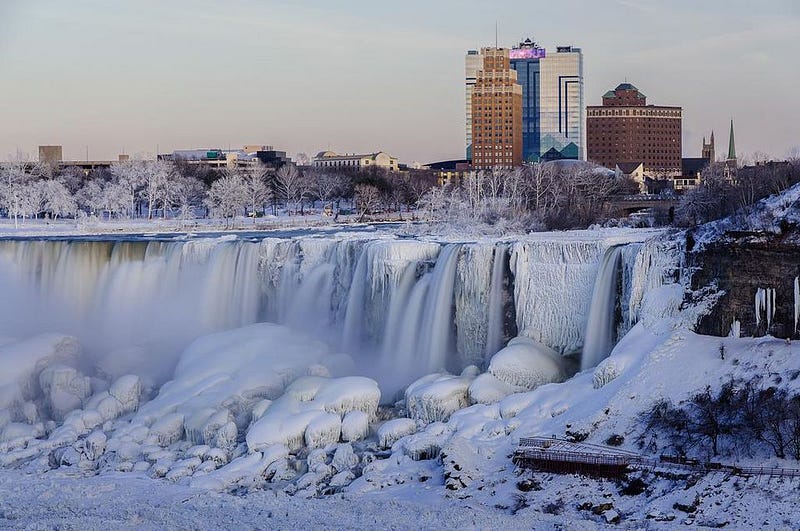
Perhaps paradoxically, it’s a strong, extremely cold polar vortex that results in stable, warm temperatures across the more populous mid-latitudes in winter. This is one effect of climate change that’s already here, and will take centuries, in the best-case scenario, to reverse. There are freezing temperatures and an extraordinary cold snap affecting huge portions of the land mass in the northern hemisphere’s mid-latitudes right now, but this won’t feel extraordinary for long.
As the Earth continues to warm, extreme weather events like this will become commonplace, with many climatologists predicting an unstable polar vortex bringing storms like this to us multiple times per decade. Welcome to the new normal, courtesy of global warming, where the Arctic can’t even remain cold in the dead of winter.
Ethan Siegel is the author of Beyond the Galaxy and Treknology. You can pre-order his third book, currently in development: the Encyclopaedia Cosmologica.





